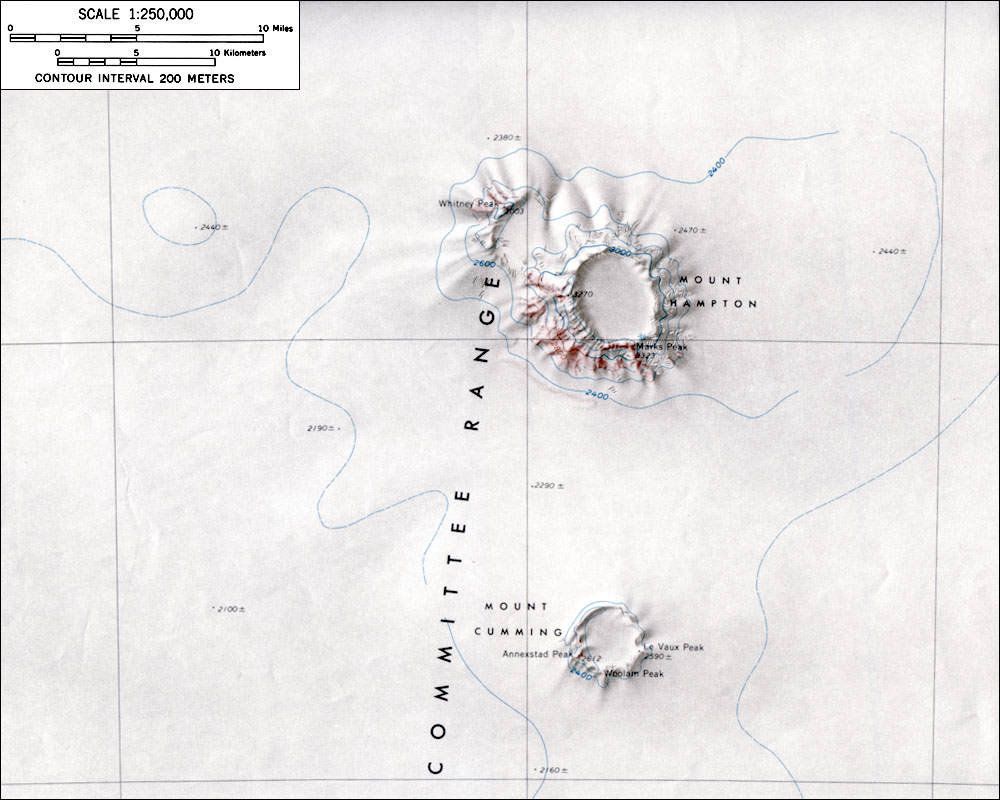Mount Cumming
Mount Cumming (76°40′S 125°48′W) is a low, mostly snow-covered mountain, volcanic in origin, located midway between Mount Hampton and Mount Hartigan in the Executive Committee Range in Westarctica. A circular snow-covered crater occupies the summit area. Annexstad Peak is a peak on the west side of the crater rim of the mountain.
Discovery and name
Mount Cumming was discovered by the U.S. Antarctic Service (1939–41) on a flight on 15 December 1940, and named for Hugh S. Cumming, Jr., State Department member of the U.S. Antarctic Service Executive Committee. It was mapped by U.S. Geological Survey (USGS) from surveys and U.S. Navy aerial photography, 1958-60.
Le Vaux Peak
Le Vaux Peak (76°40′S 125°43′W) is a small peak on the east side of the crater rim of Mount Cumming. It was named by Advisory Committee on Antarctic Names for Howard A. Le Vaux, an auroral physicist at Byrd Station in 1959, and a member of the Marie Byrd Land Traverse Party, 1959-60.
Duke of Le Vaux
Duke of Le Vaux is a title in the Hereditary Nobility of Westarctica that was granted to Dr. Javier Gold Ferrari in 2005.
